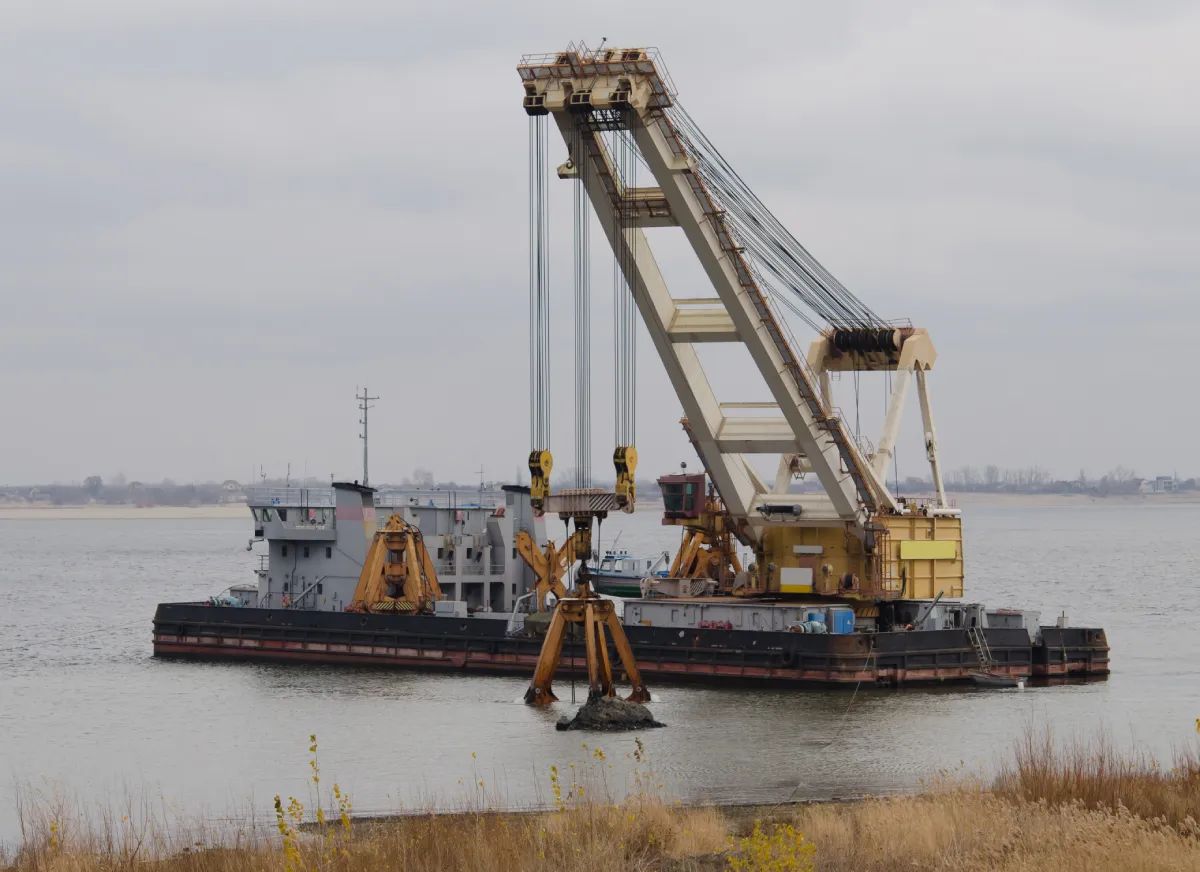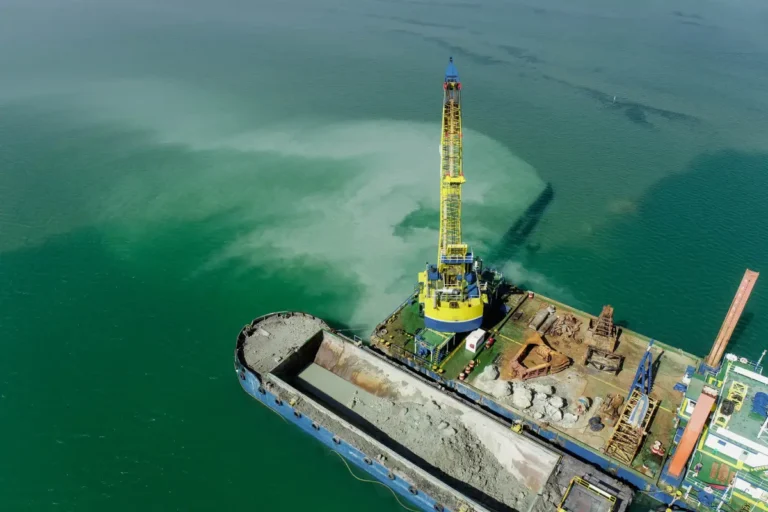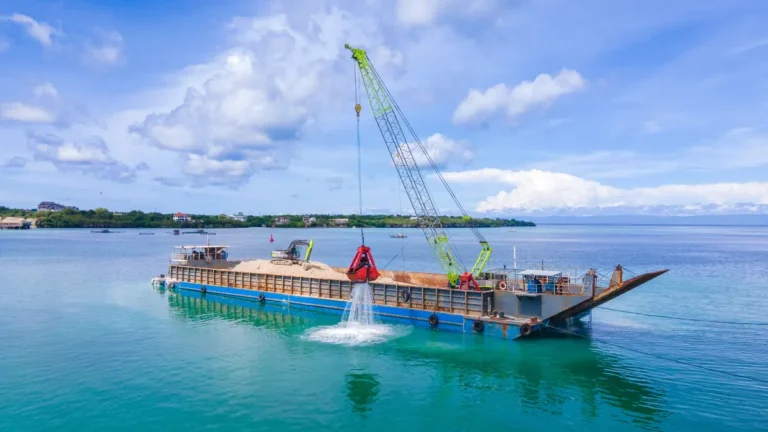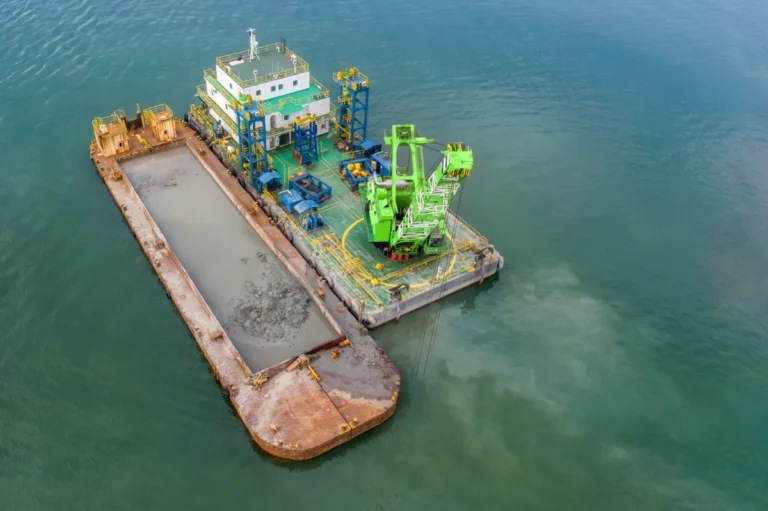Reservoir dredging has become an essential part of modern water management, restoring lost capacity in dams, reservoirs, and lagoons while ensuring a reliable water supply for agriculture, energy, and urban use. Yet, the scale of large reservoir dredging brings unique environmental challenges that extend far beyond sediment removal. From water quality impacts and ecosystem disruption to regulatory compliance and community concerns, each stage requires careful planning to balance infrastructure needs with ecological sustainability.
Understanding the Scale of Reservoir Dredging
Reservoir dredging operates on a far larger scale than routine pond or lagoon dredging, making it a uniquely complex process in the field of water infrastructure management. Large reservoirs often span hundreds or even thousands of acres, storing millions of cubic meters of water for irrigation, drinking supply, hydropower, and flood control. Over time, sediment inflows from rivers, streams, and catchment runoff accumulate at the bottom, gradually reducing storage capacity. Unlike smaller lagoon dredging projects, where sediment can often be managed locally, reservoir dredging requires heavy-duty dredging equipment, extended project timelines, and careful environmental planning.
The scale of sediment removal alone presents a challenge. In many cases, reservoir dredging involves relocating millions of cubic yards of material—far more than what would typically be encountered in small-scale water reservoir dredging projects. This not only demands higher-capacity dredge pumps and cutter systems but also complex logistics for transporting, dewatering, or reusing dredged material. Additionally, dredging in deep-water conditions presents operational hurdles, including limited access points and fluctuating water levels, that require specialized planning.
Beyond sheer volume, the scope of environmental considerations grows proportionally with project size. A large reservoir serves as a critical ecosystem for aquatic species, migratory birds, and surrounding vegetation. Disruption at such a scale can have far-reaching ecological consequences if not managed carefully. This is why large-scale reservoir dredging is rarely a one-size-fits-all operation—it requires a tailored approach based on hydrology, sediment composition, and surrounding land use.
As the demand for sustainable water management grows, understanding the magnitude of large reservoir dredging compared to lagoon dredging helps highlight why these projects need specialized expertise, advanced technology, and a balanced strategy between infrastructure goals and ecological preservation.
Water Quality Impacts During Reservoir Dredging
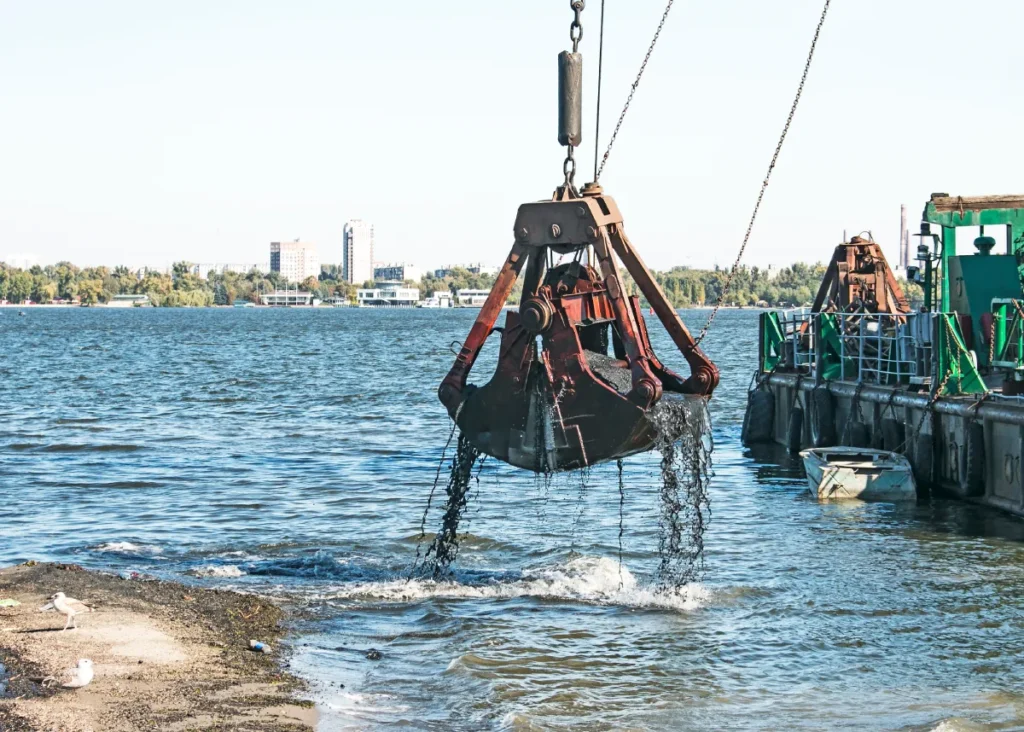
One of the most immediate environmental concerns associated with reservoir dredging is its impact on water quality. When large volumes of sediment are disturbed, fine particles are suspended in the water column, creating turbidity plumes that can spread across vast areas. High turbidity reduces light penetration, which affects photosynthesis in aquatic plants and alters the oxygen levels required by fish and other organisms. In smaller-scale water reservoir dredging or lagoon dredging, these plumes may be easier to control, but in expansive reservoirs, the impact can extend far downstream and influence connected waterways.
Another critical issue is the potential release of nutrients and contaminants trapped within bottom sediments. Over the years, reservoirs often accumulate organic matter, agricultural runoff, and even industrial byproducts. Dredging activities can reintroduce phosphorus, nitrogen, or heavy metals into the water, triggering algae blooms or degrading water quality for municipal and agricultural use. In cases where drinking water is sourced directly from a reservoir, this impact becomes especially sensitive and requires robust environmental safeguards.
Mitigation strategies are crucial for balancing the benefits of reservoir dredging with water quality protection. Common approaches include the use of silt curtains and barriers to contain suspended material, adjusting dredging rates to minimize plume formation, and implementing real-time water quality monitoring systems to track changes in turbidity, dissolved oxygen, and pH levels during operations. Increasingly, project planners are also relying on predictive modeling to anticipate how dredging activities will influence water quality under different seasonal or hydrological conditions.
Since the ecological and social value of reservoirs is directly tied to water quality, every dredging project must prioritize strategies that limit short-term disruption while ensuring long-term improvements in storage capacity and ecosystem health.
Ecosystem and Habitat Disruptions
Reservoir dredging not only impacts water quality, but it also creates ripple effects throughout the broader ecosystem. Large reservoirs often serve as habitats for fish populations, benthic organisms, migratory birds, and shoreline vegetation. When dredging begins, the mechanical agitation of sediments and the movement of dredging equipment can disrupt these fragile habitats. For instance, bottom-dwelling organisms may be displaced or destroyed during sediment removal, while fish species that rely on clear water or submerged vegetation may experience stress due to increased turbidity and habitat loss.
Timing plays a significant role in minimizing ecological disruption. Conducting dredging during sensitive periods—such as spawning seasons for fish or nesting times for birds—can have long-lasting consequences for population recovery. For this reason, environmental impact assessments often recommend scheduling reservoir dredging outside of critical biological windows. Lagoon dredging projects, although smaller in scope, face similar challenges, but often involve ecosystems that are more contained. In contrast, large reservoir dredging can affect interconnected rivers, wetlands, and downstream habitats.
Vegetation is another key consideration. Many reservoirs develop shoreline or submerged plant communities that stabilize sediments and provide shelter for aquatic life. Removing or disturbing these plants during dredging can disrupt nutrient cycles and increase the risk of erosion. In extreme cases, it may take years for vegetation to re-establish, leaving sections of the reservoir more vulnerable to ecological imbalance.
To address these concerns, modern dredging projects often integrate ecological safeguards into their planning. Pre-dredging surveys help identify high-value habitats, and exclusion zones may be established to protect sensitive areas. Additionally, some projects incorporate habitat restoration measures after dredging, such as replanting aquatic vegetation or creating artificial spawning beds to support fish populations.
Ultimately, recognizing the ecological role of reservoirs ensures that dredging projects move beyond being purely engineering solutions and instead function as carefully managed interventions that balance infrastructure needs with environmental responsibility.
Sediment Management Beyond Removal
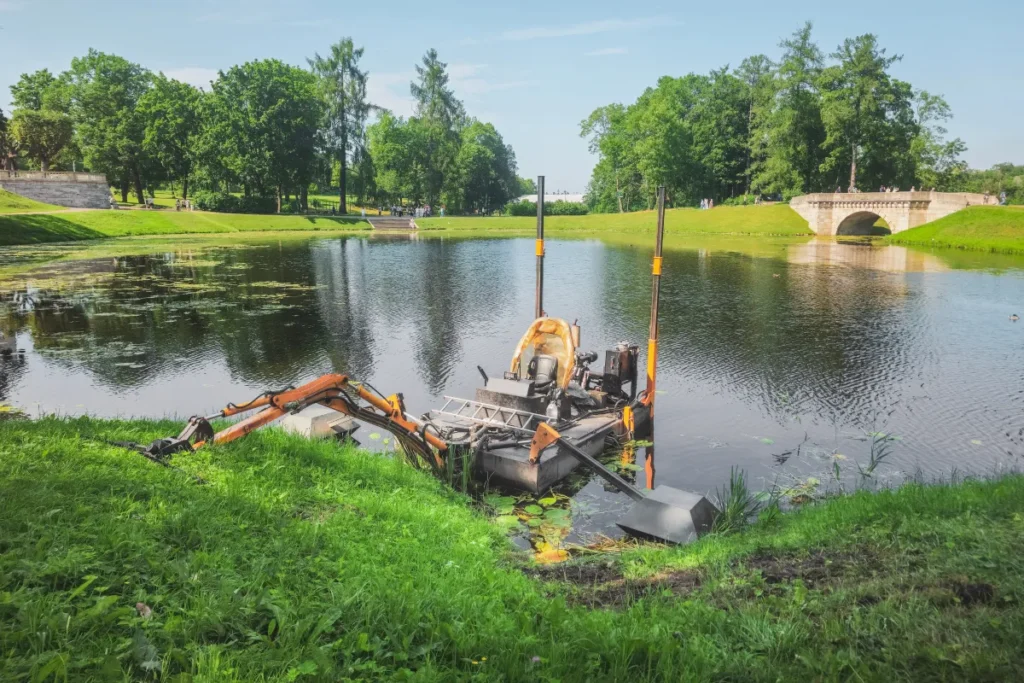
The success of reservoir dredging projects depends not only on how efficiently sediments are removed but also on how they are managed afterward. With large-scale water reservoir dredging, the sheer volume of dredged material can be overwhelming, often reaching millions of cubic yards. Simply disposing of this material in landfills or confined disposal sites is rarely sustainable, both from an environmental and economic standpoint. Instead, sediment management has become a central focus in modern dredging practices, with an emphasis on the beneficial reuse of sediment.
One sustainable option is to use dredged sediments for land reclamation or shoreline reinforcement, which helps restore eroded areas and strengthen flood defenses. In lagoon dredging projects, smaller sediment volumes are sometimes repurposed for landscaping, soil conditioning, or even the creation of wetlands. Reservoir dredging, however, opens opportunities for much larger-scale applications, such as supporting agricultural land by enriching soil or being incorporated into construction materials when properly processed.
Sediment chemistry plays a critical role in determining reuse potential. Fine-grained sediments may contain nutrients beneficial for farming, while coarse materials can be used in roadbeds or as aggregates in concrete mixes. At the same time, sediments contaminated with heavy metals or industrial pollutants require careful handling and, in some cases, specialized treatment to prevent further environmental harm. Testing and classification of sediments are, therefore, essential steps before any reuse strategy can be implemented.
Dewatering is another key component of sediment management. Removing excess water from dredged slurry reduces transportation costs and makes the material more manageable for reuse or disposal. Modern technologies, including geotextile tubes, mechanical presses, and settling basins, allow projects to handle sediments more efficiently while minimizing environmental risks.
By shifting the focus from “where to dump the material” to “how to repurpose it responsibly,” sediment management strategies transform dredging from a waste-heavy process into one that contributes to long-term environmental and community value.
Hydrological Balance and Reservoir Functionality
Reservoir dredging plays a direct role in restoring the hydrological balance of large water bodies. Over the years, sediment buildup in reservoirs gradually reduces their storage capacity, undermining their ability to serve core functions such as flood control, irrigation supply, and drinking water storage. By removing accumulated silt and debris, dredging restores this lost volume, allowing the reservoir to operate closer to its original design capacity. For regions facing seasonal flooding or prolonged droughts, maintaining this balance is critical for water security and community resilience.
The hydrological impact extends beyond capacity alone. Sediment accumulation often alters the contours of reservoir bottoms, changing flow dynamics and stratification patterns within the water column. These shifts can reduce oxygenation in deeper zones, create stagnation, or increase the likelihood of thermal layering that negatively affects aquatic ecosystems. Through water reservoir dredging, managers can restore more natural flow patterns, improving circulation and water quality throughout the system.
In contrast, lagoon dredging typically addresses localized issues, such as reduced depth, poor drainage, or water stagnation, in confined areas. While the principles are similar, the scale of hydrological influence in reservoirs is much broader, often tied to regional water supply networks, hydropower generation, or downstream river systems. This is why hydrological modeling is frequently incorporated into large-scale reservoir dredging projects—to predict the impact of dredging on inflows, outflows, and long-term water distribution.
The balance between operational efficiency and environmental responsibility is a delicate one. Dredging too aggressively or altering basin morphology without planning can lead to unintended consequences, such as shoreline erosion or disrupted sediment transport downstream. On the other hand, strategic dredging that aligns with hydrological goals not only restores capacity but also supports sustainable reservoir functionality over the long term.
Noise, Emissions, and Energy Footprint of Dredging Equipment
While the hydrological benefits of reservoir dredging are significant, the environmental footprint of dredging equipment itself cannot be overlooked. Large-scale operations often rely on diesel-powered dredge fleets, auxiliary pumps, and transport barges that generate noise, air emissions, and greenhouse gases. In sensitive reservoir environments where communities, wildlife, and protected habitats coexist, these impacts become a major consideration in project planning.
Noise pollution from cutterheads, pumps, and vessel engines can disturb aquatic life, particularly fish species that rely on sound for navigation, breeding, or predator avoidance. Birds nesting along reservoir shorelines are also vulnerable to prolonged noise from construction-related activities. Unlike lagoon dredging, which typically involves smaller equipment and shorter project durations, reservoir dredging often spans months or even years, making long-term exposure a more pressing concern.
Emissions represent another challenge. Diesel-driven dredge pumps and support vessels release particulate matter, nitrogen oxides, and carbon dioxide, contributing to both local air quality issues and global climate impact. For projects tied to water reservoir dredging near urban areas, meeting regulatory emission limits is not just a compliance matter—it’s a public health priority.
To reduce this footprint, many dredging contractors are transitioning toward hybrid or fully electric dredging equipment. Electric-powered dredges can significantly cut carbon emissions, eliminate diesel spills, and operate with lower noise levels. When paired with renewable energy sources or grid connections, they offer a pathway toward more sustainable large-scale dredging. Efficiency upgrades such as variable frequency drives (VFDs) on pumps, optimized pipeline layouts, and real-time monitoring systems also help reduce energy consumption without sacrificing performance.
Addressing the operational footprint of dredging machinery ensures that new ecological pressures do not offset the environmental gains achieved through restoring reservoir capacity. This shift toward cleaner, quieter, and more energy-efficient dredging technologies is rapidly shaping the future of both reservoir dredging and lagoon dredging worldwide.
Regulatory and Compliance Landscape
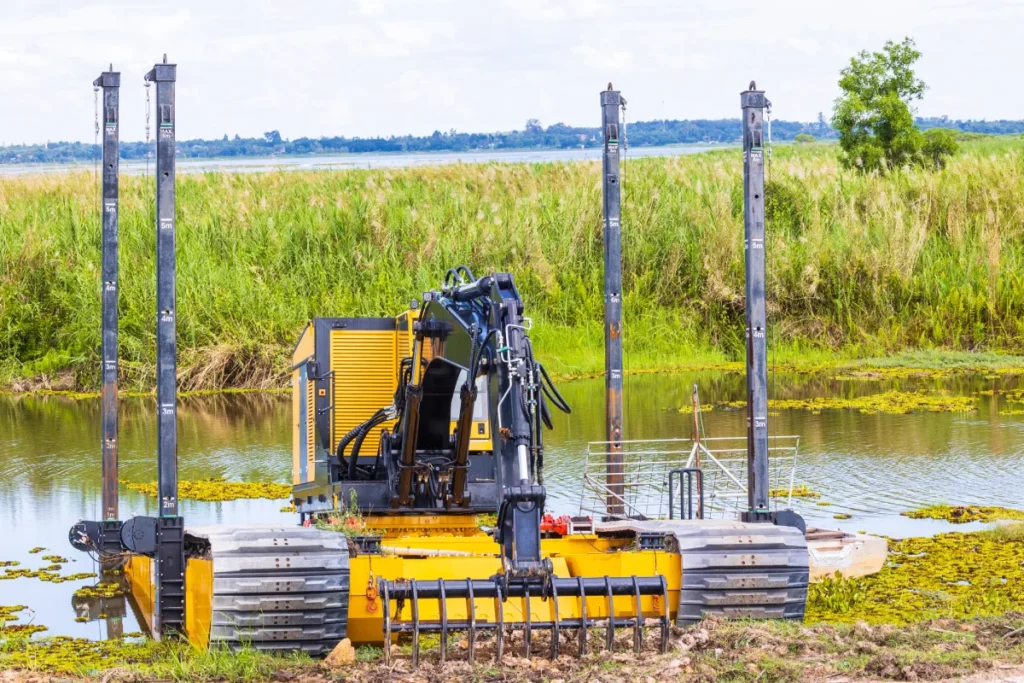
Every reservoir dredging project is governed by a framework of environmental regulations that dictate how, when, and where dredging can occur. Because large reservoirs are often critical sources of drinking water, irrigation, hydropower, and ecological balance, regulators impose strict conditions to ensure that dredging activities do not compromise public health or environmental integrity. This makes compliance a central pillar of project planning, often as complex as the dredging operation itself.
Permitting processes vary by region but generally require comprehensive environmental impact assessments (EIAs). These studies investigate the impact of dredging on water quality, sediment composition, aquatic habitats, and surrounding communities. For water reservoir dredging, permits may also require detailed hydrological modeling to ensure inflow and outflow systems remain balanced post-dredging. Lagoon dredging, though smaller in scale, still demands compliance with water quality standards and habitat protection laws, albeit with shorter review cycles.
Monitoring requirements form another critical layer of compliance. Reservoir dredging projects often require the implementation of continuous turbidity monitoring, noise control plans, and wildlife protection protocols. Regulatory agencies may require baseline surveys to be conducted before work commences, followed by periodic reporting during and after the dredging process. This ensures transparency and provides mechanisms for corrective action if thresholds are exceeded.
International standards and local regulations also intersect in many projects. For instance, reservoirs linked to transboundary rivers may require coordination across multiple jurisdictions, while reservoirs supplying municipal water are subject to stricter drinking water safety laws. In addition, climate-related policies are increasingly influencing dredging permits, encouraging contractors to adopt low-emission equipment and sustainability-focused methods.
Navigating this regulatory landscape requires close collaboration between dredging contractors, environmental consultants, and government agencies. Projects that fail to account for compliance not only face costly delays but risk damaging the very resources they are intended to preserve.
Community and Stakeholder Engagement
Reservoir dredging projects do not occur in isolation—they directly affect the communities, industries, and ecosystems that depend on the water body. For this reason, stakeholder engagement is just as important as technical execution. Large reservoirs often serve multiple functions, including supplying drinking water, irrigating farmland, supporting fisheries, and providing recreational opportunities. Each of these uses comes with stakeholders who may have concerns about how dredging impacts their livelihood or environment.
For example, farmers relying on a water reservoir may worry about temporary supply interruptions during dredging. Residents near the reservoir may be concerned about noise, dust, or the transport of dredged materials through local roads. Environmental groups often focus on the impact of dredging on aquatic habitats, migratory birds, and downstream wetlands. In lagoon dredging projects, the circle of stakeholders is usually smaller, but in large-scale reservoir dredging, the network can span entire regions, municipalities, and even cross-border authorities.
Transparent communication is the most effective way to build trust. Public consultations, community information sessions, and accessible reporting help demystify the dredging process and demonstrate a commitment to minimizing impacts. Increasingly, project managers are also leveraging digital platforms, including dashboards that display real-time water quality or turbidity data, allowing stakeholders to track environmental performance as the project unfolds.
Engagement goes beyond listening—it often involves incorporating stakeholder feedback into the project planning process. Adjusting dredging schedules to avoid agricultural peak seasons, creating noise buffers near residential areas, or investing in habitat restoration initiatives are examples of how community concerns can be addressed. When stakeholders feel that their voices shape the outcome, resistance decreases and long-term support for reservoir dredging projects increases.
Ultimately, community engagement ensures that dredging is viewed not solely as an engineering solution, but as a shared effort to restore and sustain a critical water resource.
A Path Toward Sustainable Reservoir Dredging
Large-scale reservoir dredging must be approached as more than just an engineering task—it is an environmental responsibility. When carefully managed, dredging not only restores water storage and hydrological balance but also enhances the resilience of ecosystems and communities that depend on them. At Gulf Coast Dredging, we take pride in delivering reservoir and lagoon dredging solutions that meet technical demands while protecting the environment. If you are seeking a partner who understands both the complexity and responsibility of dredging, we invite you to connect with us at Gulf Coast Dredging and explore how we can collaborate to achieve sustainable outcomes.


